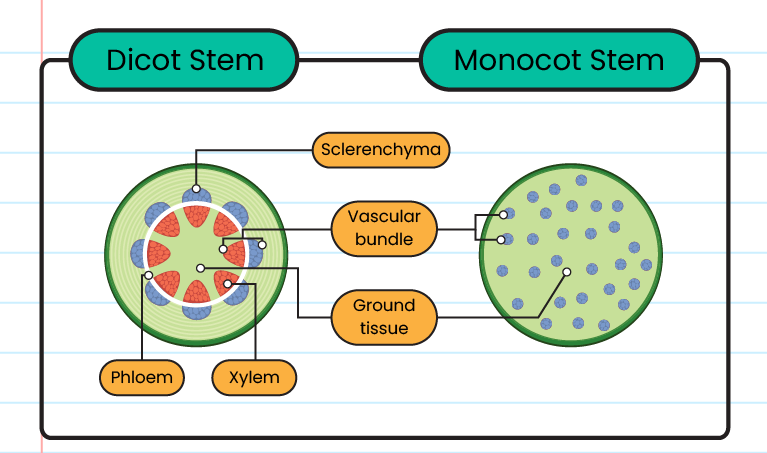| 3.4 |
Transport System in Plants |
| Definition |
|
Transpiration is the loss of water vapor from a plant through the stoma
|
The factors that affect transpiration rates:
|
Factor
|
Transpiration rate
|
|
Surrounding temperature
|
The higher the ambient temperature, the higher the rate of water evaporation (transpiration)
|
|
Light intensity
|
The higher the light intensity, the higher the rate of transpiration (open stoma)
|
|
Air movement (wind)
|
The higher the air movement, the higher the rate of transpiration (blowing water vapor from the stoma)
|
|
Air humidity
|
The lower the humidity, the higher the transpiration rate (less water vapor)
|
The transport systems in plants:


-
The xylem tissue serves to transport water and dissolved minerals from the roots through the stems to the leaves and provide support
-
Phloem tissue serves to transport nutrients (glucose) from the leaves to the stems and roots
Example question:
| Question |
Answer |
|
The diagram shows a cross section of the stem of a plant.
a) State one function of P.
b) Name the structures in plant stems that transport minerals and water.
c) What will happen to the plant if the bark and phloem ringsa are removed?
|
a) Transports nutrients from leaves to other parts of the plant.
b) Xylem
c) The top of the ring will swel because the food material cannot be transported to the bottom of the ring.
|